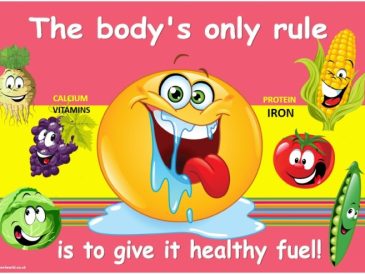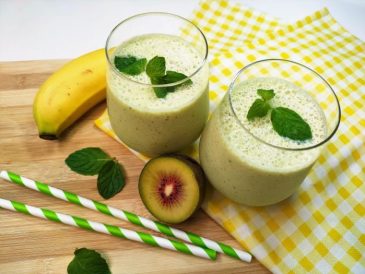Fabric and Texture
70s black mens fashion – The fabrics and textures chosen played a crucial role in defining the distinct aesthetic of 1970s Black men’s fashion. Moving beyond the constraints of previous eras, this period embraced a wider range of materials, reflecting both a growing sense of self-expression and the influence of various cultural trends. The interplay of fabric and texture contributed significantly to the overall impact of the era’s iconic styles.The selection of fabrics was intrinsically linked to the desired look and feel of a particular garment.
The rich textures and varied weights offered a palette for creating diverse styles, from sharp and sophisticated to relaxed and casual. This deliberate choice of material wasn’t merely functional; it was a powerful statement, reflecting personal style and social standing.
Fabric Choices and Their Significance
Velvet, corduroy, and silk were particularly popular choices, each lending a unique character to the garments. Velvet, with its luxurious softness and deep pile, added an air of opulence to suits, jackets, and even shirts. Corduroy, with its distinctive ribbed texture, provided a more casual yet stylish option, often seen in pants and jackets. Silk, while perhaps less prevalent than the others, offered a sophisticated sheen and drape, often used for shirts and scarves, adding a touch of elegance to an outfit.
These fabrics, along with others like leather, denim, and various knits, contributed to the diverse range of styles seen throughout the decade.
Texture’s Role in Iconic 70s Looks
Texture was integral to achieving the iconic looks of the era. The contrast between smooth and rough textures, or the interplay of different pile heights in fabrics like corduroy, added visual interest and depth. A sharply tailored velvet suit, for instance, would stand in stark contrast to a more relaxed ensemble featuring corduroy pants and a knitted sweater. This juxtaposition of textures allowed for a wide range of stylistic expressions.
The tactile quality of the fabrics also contributed to the overall experience of wearing the clothing, adding another layer to the aesthetic appeal.
Fabric, Color, and Pattern Interaction
The interaction between fabric choice, color, and pattern was a key element in shaping the overall aesthetic. Bold colors, such as vibrant oranges, greens, and yellows, were often incorporated into velvet or corduroy pieces, enhancing their richness and texture. Similarly, intricate patterns, like paisley and geometric prints, were often seen on silk shirts or scarves, adding a layer of visual complexity.
The choice of a particular fabric could influence the choice of color and pattern; for example, the luxurious feel of velvet might lend itself to more subdued colors and simpler patterns, while corduroy might be paired with bolder colors and patterns.
Examples of Fabric Types and Associated Styles
The following list illustrates the connection between fabric and style:
- Velvet: Often used in suits, jackets, and shirts, creating a sophisticated and luxurious look. Think of a sharply tailored velvet blazer paired with flared trousers.
- Corduroy: Popular for pants and jackets, offering a casual yet stylish appearance. Imagine corduroy pants in a rich brown paired with a turtleneck sweater.
- Silk: Used for shirts and scarves, adding a touch of elegance and sophistication. Picture a silk shirt in a bold print worn under a suede jacket.
- Leather: Featured in jackets and pants, projecting a rebellious and cool image. Consider a leather jacket paired with jeans and a band t-shirt.
- Denim: A staple in casual wear, often seen in jeans and jackets, representing a relaxed and versatile style. Imagine classic denim jeans worn with a printed shirt and a knit vest.
Silhouettes and Cuts

The silhouettes and cuts of 1970s Black men’s fashion were a vibrant reflection of the era’s social and cultural shifts, drawing inspiration from various sources and evolving throughout the decade. These styles often incorporated elements of Afrocentricity, funk, and soul music aesthetics, resulting in a unique and expressive approach to menswear. The decade saw a departure from the more tailored looks of previous eras, embracing looser fits and bolder shapes.The evolution of silhouettes in 1970s Black men’s fashion was a dynamic process, reflecting changing trends and societal influences.
Early in the decade, the influence of the late 60s was still present, with some elements of mod styles lingering. However, as the decade progressed, a distinct shift towards wider cuts and more flamboyant designs became increasingly apparent, culminating in the highly expressive styles of the late 70s. This evolution can be understood by examining the interplay of different influences and the gradual embrace of bolder aesthetics.
70s Black men’s fashion embraced bold silhouettes and vibrant colors, often reflecting socio-political movements. Interestingly, certain stylistic elements, like the tailored look and attention to detail, share surprising parallels with the sophisticated elegance of men’s 1920s fashion, as seen in examples showcased on this site: men’s 1920s fashion. However, the 70s styles were ultimately more expressive and less constrained, reflecting a different cultural context.
The Evolution of 1970s Black Men’s Silhouettes: A Timeline
The following timeline highlights key shifts in silhouette trends throughout the decade:
Early 1970s: A transition period. While some elements of the slimmer, more tailored styles of the 1960s persisted, wider-legged trousers began to gain popularity. The influence of soul and funk music started to become more visible in clothing choices. Think slightly flared trousers paired with fitted shirts or tailored jackets.
Mid-1970s: The peak of the bell-bottom era. Wide-legged, often dramatically flared trousers became the defining feature of many outfits. Platform shoes added to the overall height and dramatic silhouette. Shirts were often more relaxed fitting, sometimes featuring bold patterns or colors. This was a period of bold experimentation with color and texture.
Late 1970s: A move towards a more streamlined, yet still relaxed silhouette. While flares remained popular, some styles began to incorporate slimmer-fitting trousers, particularly in more formal settings. The overall aesthetic remained expressive, with an emphasis on individual style and self-expression. This was a period where a greater diversity of styles coexisted.
Three Distinct 1970s Black Men’s Silhouettes
The following descriptions detail three distinct silhouettes that captured the essence of 1970s Black men’s fashion:
1. The “Soul Brother” Silhouette: This silhouette embodied the energy and vibrancy of the soul music scene. It typically featured wide-legged, bell-bottom trousers, often in bold colors or patterns. A brightly colored, possibly patterned, shirt, perhaps with a large collar, was a key component. A fitted waistcoat or a casually worn blazer could add another layer.
Platform shoes completed the look, adding to the overall height and dramatic effect. This look was often accessorized with bold jewelry, like chunky necklaces or large rings.
2. The “Disco King” Silhouette: Reflecting the glamour and energy of the disco era, this silhouette was characterized by sharply tailored but still relaxed-fitting jackets, often in shiny fabrics like satin or velvet. Wide-legged trousers, though possibly less dramatically flared than the “Soul Brother” look, were still a prominent feature. The shirt was typically a button-down, often in a contrasting color or pattern to the jacket.
This look emphasized a sleek, sophisticated yet playful energy. Accessories such as stylish hats and flashy footwear were common.
3. The “Urban Cool” Silhouette: This silhouette, while still incorporating elements of the era’s wider cuts, offered a more understated approach. It might feature slightly flared or straight-legged trousers in neutral colors, paired with a simple t-shirt or a Henley shirt. A denim jacket or a leather jacket could add a layer of casual sophistication. This look prioritized comfort and effortless style, representing a more laid-back approach to 70s fashion.
Accessories and Details

Accessories played a crucial role in shaping the overall aesthetic of 1970s Black men’s fashion, adding personality and flair to already stylish outfits. These weren’t merely functional additions; they were powerful statements of individual style, reflecting cultural influences and social trends. The careful selection and combination of accessories demonstrated a keen understanding of fashion and a commitment to self-expression.
Hats
The hat was a fundamental accessory, offering both practicality and style. Wide-brimmed fedoras, often in felt or straw, were popular choices, adding a touch of sophistication. These hats provided protection from the sun and lent an air of mystery or coolness, depending on the wearer’s attitude and overall ensemble. Baseball caps, particularly those with team logos, represented a more casual and sporty look.
The choice of hat often spoke volumes about a man’s personality and social circles. A fedora might suggest a connection to jazz culture, while a baseball cap might point towards a love of sports or a more laid-back approach to style.
Jewelry
Jewelry choices were bold and often incorporated elements reflecting African heritage and cultural pride. Large, chunky gold chains, often featuring intricate designs, were a common sight. These chains were frequently layered, creating a visually striking effect. Signet rings, cufflinks, and bracelets, sometimes incorporating precious stones or intricate carvings, further enhanced the overall look. The use of gold was particularly significant, symbolizing wealth, success, and a connection to a rich cultural history.
These weren’t just adornments; they were symbols of status and identity.
Belts, 70s black mens fashion
Belts served both a practical and a stylistic purpose. Wide leather belts, often in shades of brown or black, were frequently worn with high-waisted pants, adding a touch of ruggedness and sophistication. The belt buckle itself could be a statement piece, featuring intricate designs or brand logos. The choice of belt material and buckle design could subtly reflect personal style, from the classic simplicity of a plain leather belt to the bolder statement of a wide, studded belt.
The belt often acted as a unifying element, connecting the top and bottom halves of an outfit.
Complementary Accessories and Outfits
Consider a typical 70s Black male outfit: wide-legged bell-bottom pants in a rich brown corduroy, paired with a fitted, collared shirt in a vibrant print – perhaps a paisley or geometric design. A wide leather belt with a simple silver buckle cinches the waist, while a chunky gold chain rests against the shirt. A fedora hat, in a matching brown felt, completes the look, adding a touch of suave sophistication.
This ensemble perfectly demonstrates the synergy between clothing and accessories, each element complementing and enhancing the others. The boldness of the print shirt is balanced by the earthy tones of the pants and hat, while the gold chain adds a touch of luxurious flair without overwhelming the overall aesthetic. The wide belt emphasizes the silhouette of the pants and serves as a subtle but effective design element.
This is just one example; the versatility of 70s accessories allowed for countless variations and combinations, tailored to individual tastes and preferences.
Expert Answers: 70s Black Mens Fashion
What were some common hairstyles for Black men in the 1970s?
Afro hairstyles were extremely popular, along with various styles of afros, including variations in size and shape. Jheri curls and other chemically processed styles were also prevalent.
How did 70s Black men’s fashion differ from that of white men?
While some trends overlapped, 70s Black men’s fashion often featured bolder colors, richer textures (like velvet and corduroy), and more flamboyant silhouettes. It was frequently influenced by African and Caribbean styles and reflected the distinct cultural experiences of Black communities.
Where could Black men purchase their clothing in the 1970s?
Clothing was purchased from a variety of sources including department stores, boutiques catering to Black communities, and smaller, independent shops. The rise of Black-owned businesses played a significant role in the fashion landscape of the time.




